
Featuring a funky new high tech insulation, Aetherm, the Oreus is the lightest and most packable synthetic jacket for its warmth that Mountain Equipment have ever made. Aimed at both alpine climbers and backpackers, it would suit anyone looking for a jacket that offers maximum performance at minimal weight, and with better ability to handle moisture than a down equivalent. A vest is also available, but here we're looking at the jacket alone.
Over the past year I've worn my pre-production sample for Scottish hillwalking, cold camps, crag belay duty, and winter climbing, and have found it both very versatile and, yes, surprisingly toasty for its lightness. Members of the review team have also been using it out in the Alps, and for crag and bouldering days closer to home in the Peak. This long term test has allowed us to really put the Oreus through its paces in a variety of settings. Overall we're impressed.
In use
So is this a full-blown winter belay jacket? Well not quite. Thanks both to its closer cut and lesser thickness the Oreus is better considered a jack of all trades, made for wearing on the go as much as standing around in, and light enough for year-round use in the way a full-on Scottish winter belay refuge really isn't.
To draw one obvious comparison, it's not quite as warm or weather-protecting as a Mountain Equipment Fitzroy (600g+), my staple Scottish winter synthetic jacket; but on the other hand it is significantly lighter (390g) and more easily compressed, making it quite a different proposition. So the Oreus is clearly preferable for weight-conscious uses in less extreme conditions, be that backpacking or summer alpine climbing.
On those winter mountain days when the forecast suggests you could get by with something a bit less bulky, it's a good weight saving option. While I used it as a belay jacket and emergency spare layer a couple of times last winter, I did so only on such fair weather days. Whether you're climbing or walking, heavyweight alternatives with more weather-deflecting fabrics would be more appropriate for full on Scottish winter conditions. In serious cold, however, the Oreus can readily double as a midlayer, and I can see it working really well in that role for expedition climbing.
Weight
At just 390g for my size L sample, and stuffing (with effort) into its own internal pocket - with hang loops for clipping to a harness - this is a very packable light-midweight layer, but one that offers the sort of insulating performance you'd normally expect to come in a much heavier jacket. It's a lot warmer than any synthetic jacket of equivalent weight I own.
Fit
Men's and women's versions are both available. Reinforcing the sense that this is not a full-on winter mountain belay jacket, designed to be donned over all your other layers, is its closer fit. For less extreme conditions it works well in main jacket mode over a baselayer and light midlayer, and the trim cut in the body and underarms means there's less bulk getting in the way when you're moving. As things get wetter or colder you'll want to layer up over the top of the Oreus with a shell, and again its close-ish fit is an advantage for this. If you did want to use it on top of lots of other layers, in traditional winter belay jacket style, then you might need to consider going up a size from your usual; we know of a couple of folk who've got on well with a size increase.
Consensus here is that if you wear it in your customary size (L for me) then the Oreus can feel a wee bit short in the hem, though it does come with dual tether anti-snag drawcords for a draught-excluding seal around the waist. Unfortunately on me that underarm cut is a fraction too close, so I get some hem lift with raised arms. Thanks too to the shiny fabric, this rise is enough for the jacket to ride up out of a harness over the course of a pitch, an annoyance for climbing. Others get on better in this regard, so do the arms-up test for yourself when you try one on.
Sleeve length is generous - no cold wrists when reaching up - and though the simple stretch-bound cuffs are tighter than on a dedicated belay jacket they do still pull over bulky insulated gloves.
Hood
The hood is really snug and - crucially - easily large enough to fit over a helmet, with little or no restriction to head movement. On a bare head the fit can be tightened up quite effectively via side toggles, hidden within the hem for neatness and ease of use wearing gloves. With no structure of its own the hood really needs a helmet under it to resist flapping in the wind, and a little stiffening in the brim would have been nice, given how often most users will be wearing the Oreus when not actually climbing. Drop the hood and you get a lovely high collar for maximum neck coverage.
Insulation
Here's where things get techy. Doing the business inside is a new 100% recycled polyester insulation called Aetherm, developed by ME, which they say offers 'best in class' warmth-to-weight, compressibility and loft.
Here's a short video explaning more:
"The unique 3D structure of Aetherm insulation provides unparalleled performance characteristics not found in other synthetics," says Dr Matt Fuller, Product Engineer at Mountain Equipment.
It's made out of multiple strands of fibre, interlocked within a reflective layer, a structure that allows moisture to dissipate quickly due to its larger surface area, we're told, and which also allows air to pass through to help it dry faster than most alternative insulation (thus keeping you toasty even in wet conditions). The fill doesn't need to be held in baffles, which reduces stitching and wind penetration. And being highly durable it can also be packed and re-packed indefinitely, with no loss of loft.
They talk a good game, but how does it stack up in the real world? Well in use we've been impressed so far. The loft is great; we'd say it definitely works well in cold/damp conditions; it's comfortably breathable and quick-drying when you're on the move; and for a jacket this light the Oreus is noticeably toasty. All the key boxes ticked then.
Fabric
Outside and in it's a 100% recycled polyamide fabric, a very thin 10D material that does need to be treated with a bit of care. I wouldn't want to squirm up any chimneys with the Oreus as an outside layer. The fabric has a good degree of wind resistance, but because it and the fill are so light they do deflect in the wind, which affects how warm you feel, so in blustery conditions you might want to add a shell sooner than in some insulated jackets (such as the Fitzroy). There's a PFC-free DWR for shrugging off light showers and a bit of snow, but again a shell will be required when the weather properly turns.
Features
The features are suited to an all-round jacket of this sort. The two zipped hand pockets sit up out of the way of a harness or rucksack hipbelt, and they're big enough to carry thick gloves. You get a single chest pocket, and though this holds a phone - just - I wouldn't put one here in cold weather since it's placed above the insulation. Inside is a drop pocket for gloves, which doubles as the stuff sack. With a twin front zipper, plus bottom popper, you've also got easy belay access.
Ethics and environment
Mountain Equipment have increasingly been using recycled materials, and while they have not made a big thing of it, the Oreus has 100% recycled inner and outer fabrics and 100% recycled synthetic insulation (excluding the scrim) and has also won an ISPO award for its insulation.
Summary
The Oreus is a very capable and versatile jacket offering light and packable insulation for pretty much any mountain activity. Hillwalking, backpacking, winter mountaineering, alpine climbing, or chilly weather at the crag - you name it, the Oreus is good for it. While it can't quite replace a heavyweight belay jacket for full Scottish winter foulness, its performance in damp conditions and comfort on the move help give it a distinct role of its own. What really sets it apart is the Aetherm insulation, which offers fantastic loft and warmth for its minimal weight - certainly among the best currently available.
We can't gloss over the price tag, but before you get hot under the collar it's worth noting that the insulation has to be put together by hand, a labour intensive - and thus expensive - process. The cost might be high, but for more weight-conscious users it's a state of the art investment well worth considering.
































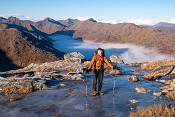


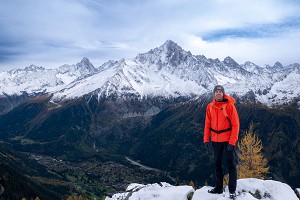



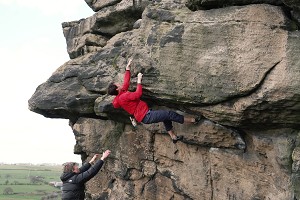

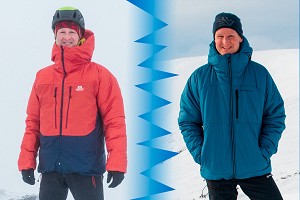
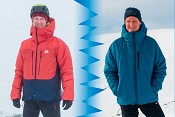


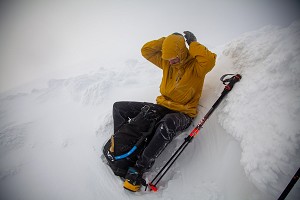





Comments
It looks a really good multi use mid/outer layer from ME - But is it much different to jackets like the Patagonia DAS Light & Arc'teryx Proton heavyweight ?
Also your right regarding the price tag, but in all all fairness IMHO a lot of gear's prices are now sky high. But will enough people buy it.... Too much for me...sadly
I think a lot of people would probably be better off buying something that is maybe a couple of hundred grams or so heavier yet (probably) significantly more durable so better on the environment and the wallet. The review mentions no reduction in loft over time but experience suggests this can happen quite quickly if worn with a pack for long periods. For 'just in case' use i.e something that's going to be in a pack a lot id be inclined to go for something like Montane respond at half the price, granted it won't be as warm for the weight
I rate mine.
It is a lot thicker/warmer than a DAS light - that I also own.
i imagine it is less breathable than a proton heavy weight but substantial warmer. I don’t own a proton but am wearing an Atom as I type this.
its funny cut for this sort of jacket but it works quite well if you dress light - Ie just a fleece and a gore-tex a la Mark Twight. It also works well as a summer alpine belay jacket.
Thanks to Dan for sorting me out with the jacket.
Tom
I like the sound of this apart from the 10d outer shell. Is there a jacket with the same insulation but a sturdier shell?
Sounds like it could be pretty decent. How have you found its loft retention/thermal performance over time?